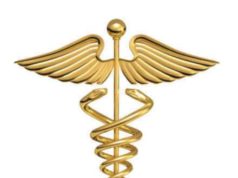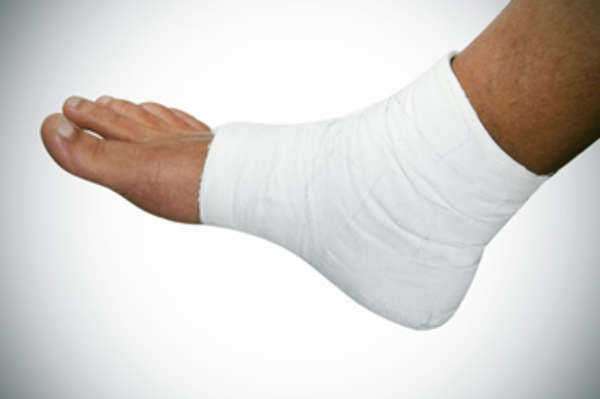
Lead poisoning is a preventable environmental health problem that can result in serious health issues, especially in children. Lead is a toxic heavy metal that can cause damage to the brain, liver, kidneys, and other organs. Although lead poisoning can occur in any age group, it is more commonly found in children, especially those under the age of six. This article aims to discuss the causes, symptoms, prevention, and treatment of lead poisoning.
Causes of Lead Poisoning
Lead is a naturally occurring metal that can be found in the air, soil, and water. However, the major sources of lead poisoning are lead-based paint, household dust, water from lead pipes or plumbing fixtures, and contaminated soil. According to the Environmental Protection Agency (EPA), lead paint was banned for use in housing in 1978, but millions of homes built before that time still have lead-based paint. When lead-based paint deteriorates or is disturbed during renovation, repair, or painting, it releases toxic dust particles into the air that can be inhaled or ingested. Lead-contaminated soil can result from lead-based paint, gasoline, and industrial pollution.
Children can get lead poisoning by inhaling or ingesting lead-contaminated dust, soil, water, or certain consumer products. Lead can also be passed from a pregnant woman to her fetus. Children who live in homes built before 1978 are particularly at risk of lead poisoning. Other risk factors for lead poisoning include poverty, older housing, inadequate nutrition, and geographic location.
Symptoms of Lead Poisoning
Lead poisoning can have a range of symptoms that vary depending on the level and duration of exposure. The symptoms may include:
– Abdominal pain, constipation, or diarrhea
– Loss of appetite or weight loss
– Fatigue, irritability, or lethargy
– Headaches or dizziness
– Hypertension
– Joint or muscle pain
– Memory loss or difficulty concentrating
– Anemia or pale skin
– Nausea or vomiting
– Seizures or convulsions
– Cognitive or developmental delay in children
If lead poisoning goes untreated, it can cause permanent damage to the brain, nervous system, kidneys, and other organs.
Prevention of Lead Poisoning
Prevention is the most effective way to reduce lead poisoning. The following measures can help prevent lead poisoning in children and adults:
– Test your home for lead: Have your home tested for lead if it was built before 1978 or if you are unsure about the presence of lead-based paint. Professional lead testing services can test your home for lead-based paint, dust, and soil.
– Get your child tested for lead: Children under six years old and those who are living in older homes or at risk of lead poisoning should have their blood tested for lead level. Children who test positive for lead poisoning should get prompt medical treatment.
– Keep your home clean: Regularly clean floors, windowsills, and other surfaces with a damp cloth to reduce the risk of dust lead exposure. Use specialized cleaning products that are made for lead surfaces.
– Avoid using lead in consumer products: Avoid using cosmetics, toys, jewelry, and other consumer products that contain lead. Check for product recalls for lead products.
– Use lead-safe work practices: If you are working in a renovation or painting project in an older home, use lead-safe work practices that reduce the risk of lead exposure. For instance, use disposable coveralls and gloves, use a HEPA vacuum, and contain the work area.
– Eat a healthy diet: A healthy diet that is rich in calcium, iron, and vitamin C can help reduce the absorption of lead in the body. Children and pregnant women should eat a healthy diet that includes dairy products, green vegetables, fruits, and lean protein.
Treatment of Lead Poisoning
The treatment of lead poisoning depends on the level of lead in the blood and the severity of symptoms. The initial treatment involves stopping the exposure to lead and reducing the absorption of lead in the body. Mild cases of lead poisoning may only require monitoring the lead level and preventing further exposure. More severe cases may require chelation therapy, which involves administering medications that bind to lead in the body and remove it through urine. However, chelation therapy can have side effects and is not recommended for all cases of lead poisoning. Medical treatment for lead poisoning should always be done under the guidance of a healthcare provider.
Government Resources on Lead Poisoning
The U.S. government has several resources that offer information on lead poisoning, prevention, and regulations. The Centers for Disease Control and Prevention (CDC) has a lead poisoning prevention program that provides guidance on screening, testing, and managing lead poisoning cases. The CDC website also has resources for the public, healthcare providers, and other stakeholders on lead poisoning prevention and intervention.
The Environmental Protection Agency (EPA) has regulations for lead-based paint, soil, and water, and offers resources for lead-safe renovation, repair and painting. The EPA also provides information and resources for consumers, businesses, and communities on lead poisoning prevention and protection.
The Department of Housing and Urban Development (HUD) has programs and resources for lead-based paint disclosure, abatement, and prevention. The HUD website has guidance, toolkits, and grant opportunities for homeowners, landlords, and public housing agencies on addressing lead hazards.
Conclusion
Lead poisoning is a serious environmental health problem that can have long-term health effects, especially in children. Prevention is the key to reducing lead poisoning, and it involves testing for lead, reducing exposure to lead-based paint and dust, and following lead-safe practices. If you suspect that you or your child may have lead poisoning, contact a healthcare provider for testing and medical treatment. The government has several resources that provide information and guidance on lead poisoning prevention, regulations, and intervention. By working together, we can reduce the risks of lead poisoning and protect the health of our communities.
Facts about Lead Poisoning
Lead poisoning is the result of long-term exposure to lead resulting in increased levels of lead, a heavy metal, in the human body. Lead is a naturally occurring metal found in nearly everything ranging from batteries to construction materials.
Lead that can cause lead poisoning can be found in:
• Soil: can be found due to broken-down lead pain, pesticides, or gasoline residue
• Water: lead from soil or atmosphere can end up in both ground and surface water, along with drinking water due to plumbing that has lead, leading to lead poisoning
• Lead containing products such as herbal remedies, ceramic glazes, solder with lead, bullets, and improperly made products
Certain industries where facilities produce products that contain lead can also cause lead poisoning. Some of these products include:
• Ammunition
• Batteries
• Surgical equipment
• Circuit boards
• Jet engines
• Paint
• Radiation shields
• Fetal monitors
Other professions are often exposed to increased levels of lead including:
• Plumbers
• Lead miners
• Auto mechanics
• Construction workers
• Battery recyclers
• Firing range instructors
Lead poisoning occurs when the body is exposed to higher levels of lead, particularly when the lead is swallowed, inhaled, or absorbed through the skin. High levels of lead can act as a poison and result in chronic or acute toxicity, depending on the length and amount of exposure.
During lead poisoning, lead gets distributed throughout the body in the same fashion as other minerals like zinc or iron. Much of it winds up in the bones, and can interfere with proper erythrocyte production as well as calcium absorption.
Lead poisoning results in severe health problems, particularly in young children. While lead is very toxic to everyone, unborn fetuses and young children are at highest risk for developing problems resulting from lead poisoning since their size and development make them more susceptible to lead poisoning.
Lead Poisoning can result in many different health problems, most prominently in children, such as:
• Less muscle and bone growth
• Decrease in muscle coordination
• Language and speech problems
• Seizures and unconsciousness
• Damage to kidneys, the nervous system, and possibly hearing
• Developmental delay
When an individual is affected by poisoning, not many symptoms show up that indicate sickness. Because of the lack of any visible symptoms, it is important to eliminate all possible sources of lead poisoning as a preventative measure. Occasionally, some symptoms do appear:
• Difficulty concentrating
• Irritability or other behavioral problems
• Headaches
• Weight loss
• Loss of appetite
• Pica
• Fatigue
• Abdominal pain
• Constipation
• Seizures
• Nausea or vomiting
• Metallic taste in the mouth
• Pale skin due to anemia
Lead poisoning treatment relies on just how much lead is in the body. If there is only a small degree of poisoning, it is fairly easy to treat the disease and prevent future poisoning. With severe cases of and higher concentrations in the body, a chelating agent is usually used to remove excess lead from the body.























